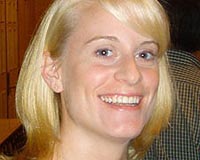 |
Huntington Beach CA (SPX) Jul 03, 2009 An industry team led by Boeing has received a contract from the Defense Advanced Research Projects Agency (DARPA) for work on Phase 2 of the Fast Access Spacecraft Testbed (FAST) program. The $15.5 million cost-plus-fixed-fee contract is currently funded to $13.8 million. DARPA's FAST program aims to develop a new, ultra-lightweight High Power Generation System (HPGS) that can generate up to 175 kilowatts - more power than is currently available to the International Space Station. When combined with electric propulsion, FAST will form the foundation for future self-deployed, high-mobility spacecraft to perform ultra-high-power communications, space radar, satellite transfer and servicing missions. Boeing Phantom Works of Huntington Beach is leading the effort with support from Boeing Network and Space Systems, El Segundo, Calif. The Phase 2 work will include designing, fabricating and integrating test articles, performing a series of component-level evaluations and running two full-scale system tests. "Our team is pleased to partner with DARPA in developing this powerful new technology," said Tom Kessler, FAST program manager, Boeing Advanced Network and Space Systems. "FAST offers significant cost and performance benefits to our commercial, civil and national security customers, including new high-power applications to provide a cost-effective means for spacecraft to travel to the outer solar system." During Phase 1 of the program, the Boeing-led team, which includes DR Technologies, Northrop Grumman Astro Aerospace, Texas A and M University, Emcore, Boeing subsidiary Spectrolab Inc., and other key suppliers, developed a preliminary design for an HPGS capable of providing more than 130 watts per kilogram on a system that is less than half the weight and one sixth the size of an existing on-orbit solar power system. The team also defined the test program being conducted in Phase 2, which will verify the performance and operation of the HPGS's solar concentration, power conversion, heat rejection, structure and deployment, and sun pointing and tracking subsystems. The Boeing team's unique solar concentrator design offers higher performance and greater radiation tolerance than current on-orbit solar power generation systems. Boeing will also be using different approaches to solar cell technology to include capabilities from Emcore and Spectrolab. The size efficiency of the HPGS enables a new class of compact spacecraft that can self-deploy from low-Earth orbit to reach their final orbit using electric propulsion. This permits the use of smaller, less expensive launch vehicles that can support high-value science missions to the outer solar system without the need for expensive radioisotope power systems.
Share This Article With Planet Earth
Related Links Boeing Integrated Defense Systems Space Tourism, Space Transport and Space Exploration News
 NASA Selects New Astronauts For Future Space Exploration
NASA Selects New Astronauts For Future Space ExplorationHouston TX (SPX) Jun 30, 2009 After reviewing more than 3500 applications, NASA has selected nine men and women for the 2009 astronaut candidate class. They will begin training at NASA's Johnson Space Center, Houston, in August. "This is a very talented and diverse group we've selected," said Bill Gerstenmaier, NASA associate administrator for Space Operations. "They will join our current astronauts and play very ... read more |
|
| The content herein, unless otherwise known to be public domain, are Copyright 1995-2009 - SpaceDaily. AFP and UPI Wire Stories are copyright Agence France-Presse and United Press International. ESA Portal Reports are copyright European Space Agency. All NASA sourced material is public domain. Additional copyrights may apply in whole or part to other bona fide parties. Advertising does not imply endorsement,agreement or approval of any opinions, statements or information provided by SpaceDaily on any Web page published or hosted by SpaceDaily. Privacy Statement |